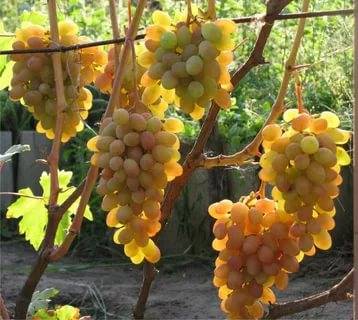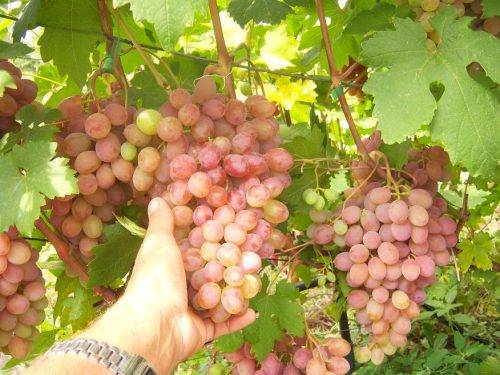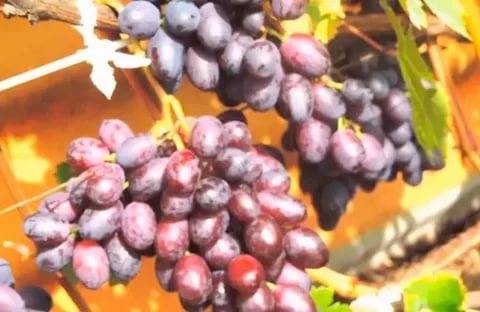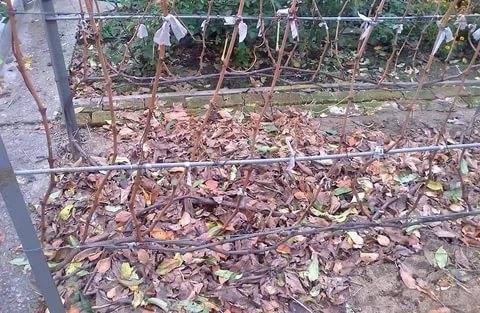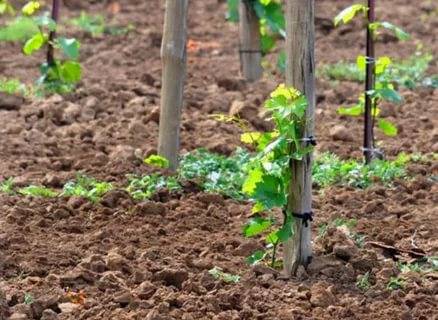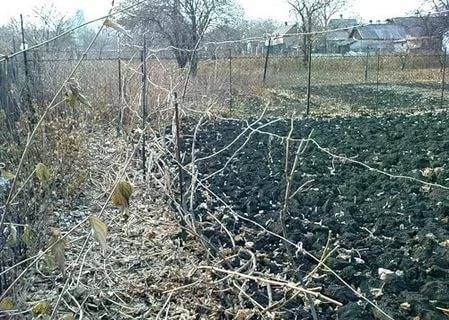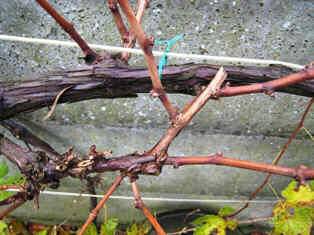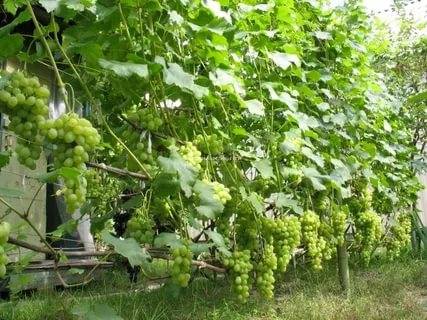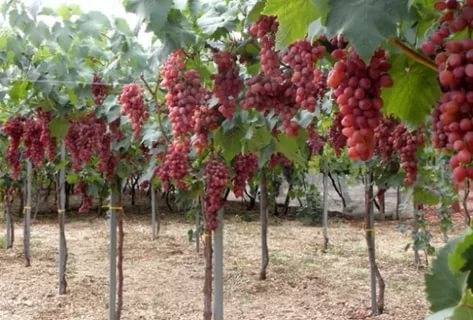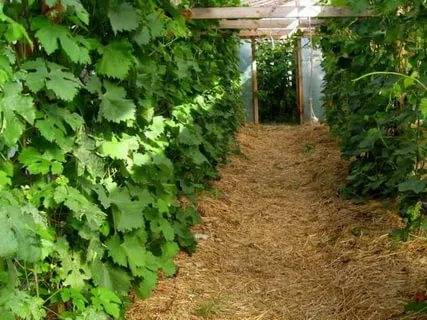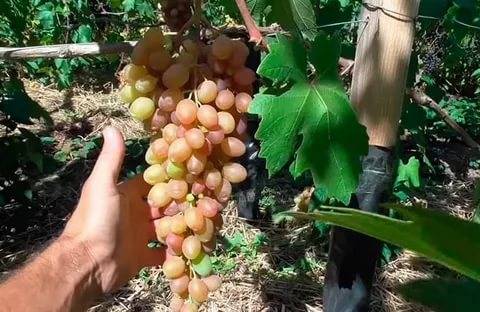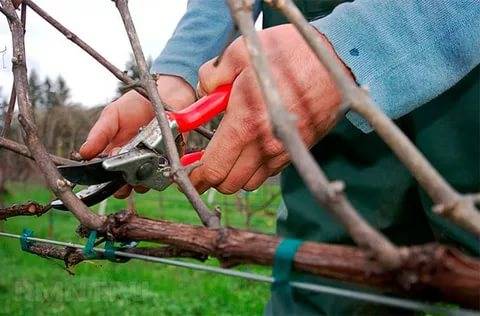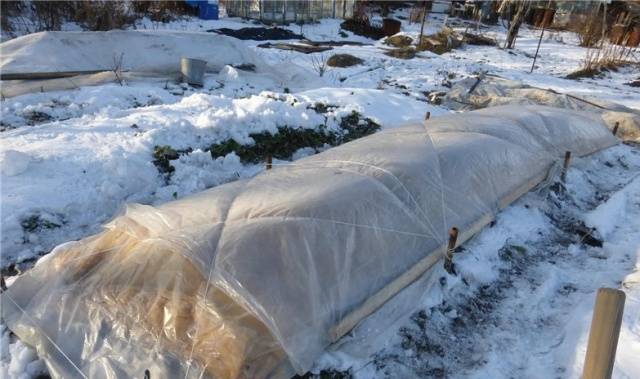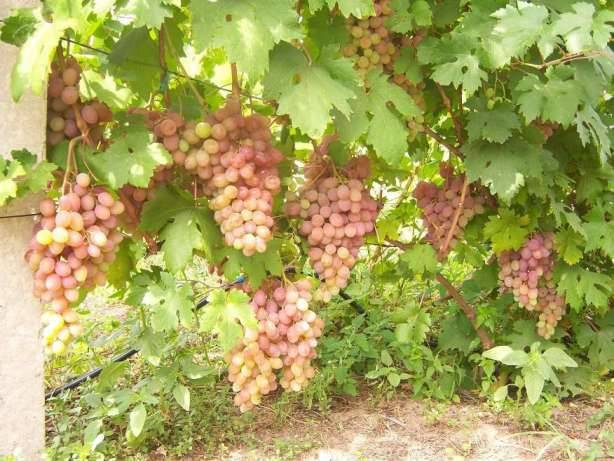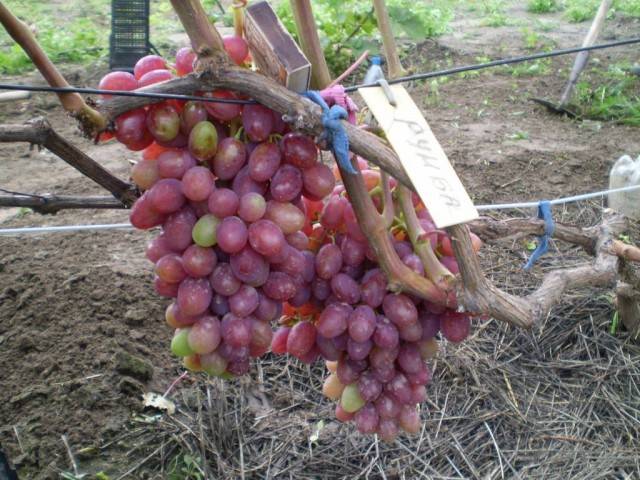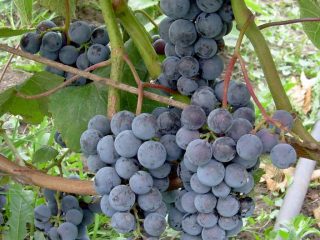Content
Thanks to the efforts of breeders, grapes are grown today not only in the southern regions, but also in temperate latitudes. There are many frost-resistant varieties, among which the Rumba grapes are very popular.
This table grape variety, bred by an amateur gardener by crossing the other two, has excellent characteristics:
- beautiful appearance;
- great taste;
- simple rules of care.
Description of the variety
Large oval grapes of the amber-pink color Rumba, collected in large cylindrical bunches, attract with their beautiful appearance and barely perceptible aroma of nutmeg. The weight of each berry can reach 9-10 g. The dense skin protects them from hornets, but it is not felt at all when consumed. Juicy fleshy berries of the Rumba variety are characterized by:
- high sugar content - up to 24%;
- high content of vitamins B and C;
- the presence of trace elements and organic acids.
The enzymes contained in the Rumba grapes take part in the processes of hematopoiesis, due to which it is often recommended for various diseases. The weight of Rumba bunches, on average, is about 800 g, but it can be more. Each brush contains up to 100 grapes. Rumba grapes tolerate transportation well and retain their excellent presentation.
Rumba grapes give large strong bushes with long, up to 5-6 m, annual shoots, which in the second or third year already begin to bear fruit. The Rumba variety is characterized by early ripening - the grape harvest begins at the beginning of August. But even if the bunches are harvested later, they will not lose their taste and presentation - by watching the video, you can get acquainted with the description of the Rumba grapes:
Such characteristics of the Rumba variety are also attractive to gardeners, such as:
- consistently high yields every season;
- good frost resistance - the variety can withstand 20-degree frosts;
- disease and pest resistance;
- fast survival of cuttings;
- unpretentiousness in the care of grapes.
Landing features
Rumba seedlings are usually planted in spring. There are also options for autumn planting, but then you need to watch out for night frosts. If the temperature drops below 0 degrees, the bushes may freeze out. The Rumba variety is undemanding to the soil, the main thing is the organization of proper care. However, growing grape bushes require a strong root system, so they need to provide them with enough space. To do this, leave a distance of 3 m between grape seedlings.Otherwise:
- neighboring bushes will be intertwined with long shoots, injuring bunches and berries;
- the root system of the grapes will remain weak, which will cause a decrease in yield;
- lack of sunlight due to thickening of the bushes will lead to crushing of the berries.
Hole preparation
Features of the preparation of holes for planting Rumba grapes are as follows:
- for planting seedlings, it is necessary to dig spacious holes with a diameter and depth of 1 m;
- at the same time, the upper, more fertile soil layer of about 0.5 m should be laid out separately from the second, deeper one;
- if the groundwater is too high, lay drainage from fine gravel at the bottom of the hole;
- a mixture of humus is poured over the drainage with the top layer of earth set aside.
Thus, the layers of soil are interchanged, placing a fatty, nutrient-rich soil under the root system of the grapes. The lower layer, which contains much less organic and mineral salts, is used to fix the grape stem.
Rumba grape planting rules
To plant this variety, you need to select seedlings that have well-developed roots and young shoots about 20 cm long. Each of them should have no more than 4 buds.
Several recommendations will help to properly plant the seedlings of Rumba grapes:
- the day before planting, the roots of the seedlings are slightly trimmed and placed in a nutrient solution;
- the root system of the seedling is carefully placed in the hole and covered with earth, tamping layer by layer;
- the hole is not completely filled up, leaving a small depression around it a few centimeters;
- 2-3 buckets of settled water are poured into the recess;
- after watering, the soil around the bushes is loosened to facilitate the availability of oxygen for the roots, and then mulch it;
- vines are tied to vertical supports to guide them.
Grape care
Description of the Rumba grape variety, photos and reviews testify to the simplicity of the agrotechnical techniques necessary for its cultivation.
However, these activities must be regular and timely:
Watering
Rumba grapes need to be watered regularly throughout the season from April to October. The first watering of the bushes is carried out immediately after planting. After 2-3 weeks, the grapes are pruned, after which the seedlings are watered again. It is necessary to monitor the regularity of watering, however, waterlogging of the soil should not be allowed - this is fraught with the occurrence of fungal infections or provoking rotting processes in the root system of grapes.
During the growing season, it is necessary to provide the young shoots of Rumba grapes with optimal conditions for development, therefore, more water is required. It is necessary to stop watering the bushes during flowering, since excess water is fraught with shedding of flowers and a decrease in the yield of the Rumba variety.
When organizing watering, it is worth adhering to some recommendations:
- water should not fall on the green parts of the plant; you need to moisten the soil around the bushes;
- the water temperature should be comfortable enough for the vine;
- before watering, the water should be defended for some time;
- especially you need to beware of high humidity during the ripening of grapes, as cracks can form on their surface.
Top dressing
The Rumba grape variety does not require frequent feeding - it is enough to apply humus or bird droppings every three years as an organic fertilizer. For this, small holes are prepared around the Rumba grape bushes. Of the mineral compounds, nitrogen salts are effective after wintering grapes. Top dressing with potash and phosphorus fertilizers must be carried out before flowering grapes and before sheltering it for the winter.
The Rumba grape variety, as its description shows, is resistant to pests and fungal infections. One of the most common diseases is mildew. It infects grape leaves, causing them to fall off. The characteristic signs of the disease are the formation of white bloom and yellow spots on the leaves. If you do not take treatment, the disease will affect the entire bush. Having lost the leafy cover, which provides the grape vine with food and oxygen, it will die. For the fight against fungus, copper-containing preparations are most effective. However, you should not process the bushes of the Rumba variety during the ripening period.
Itching is another dangerous pest. It can hide under the bark and manifests itself as a tiny white cobweb that covers the inside of the grape leaf. Affected leaves gradually swell and wither.At the first signs of the disease, it is necessary to process the leaf blades in order to avoid further spread of the disease.
To protect the Rumba grapes from these diseases, you need to periodically carry out preventive work:
- avoid strong thickening of the shoots;
- in time to clear the near-trunk areas from weeds;
- free the stems from the old bark;
- regularly spray Rumba bushes with disinfectants.
Usually, gardeners spray vines before and towards the end of flowering with phosphorus-containing fungicides.
Mulching bushes
By mulching the soil under the grape bushes, moisture can be retained for a longer time. An additional benefit of mulch is that soil microorganisms break down small particles, providing the vine with useful substances. For mulching Rumba grapes, you can use such improvised materials as:
- herbal compost;
- a layer of fallen leaves;
- straw;
- small twigs;
- silage and cake from the juicer.
Sometimes a special mulch paper is used for mulching, which is accompanied by instructions for correct use. The thickness of the mulch layer must be at least 5 cm.
Rumba grape pruning
During the summer, a lot of young shoots are formed on the vines, creating an additional load on the vines. In order for there to be enough food for the formation of berries and their grinding does not occur, it is necessary to regulate the number of shoots. Excess ones need to be removed when trimming.
The optimal number of shoots on young bushes of the Rumba variety after pruning is no more than 20 brushes, and on adults - up to 40. The remaining shoots should have 6-8 eyes. Autumn pruning of grapes Rumba is performed before the shelter for the winter, around the end of October.
Shelter before wintering
In the southern regions, vineyards are not sheltered for the winter, but for temperate latitudes this procedure is mandatory. There are several ways to cover the vine. But in any case, it is bent to the ground and fixed with staples or wooden horns, after having laid plywood. After that, the vine must be treated with a solution of copper sulfate and sprinkled with wood ash, which has an antifungal effect.
On top of the vine, you can sprinkle it with earth or pre-install arcuate rods above the shelter, on which you should stretch a plastic wrap. From the sides, the film is sprinkled with earth, and the ends remain open to provide oxygen to the vines.
In spring, Rumba grapes should be opened gradually, as recurrent frosts are possible. You can open the film in the daytime, and close it again at night. The vine can be fully opened after the end of the night frost.
Testimonials
Numerous reviews of the Rumba grape testify to the unpretentiousness of the variety, its high yield and unusually sweet berries.
Conclusion
Wonderful taste, beautiful appearance, adaptation to different climatic conditions and simple rules of agricultural technology make Rumba grapes one of the most attractive for growing on their site.

